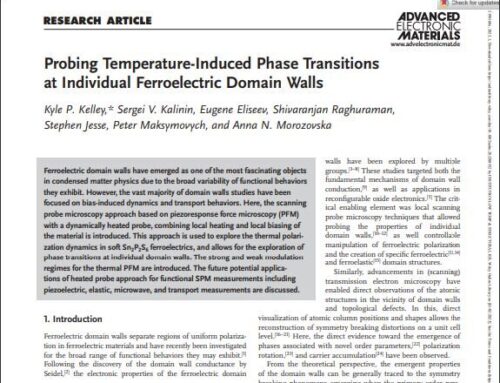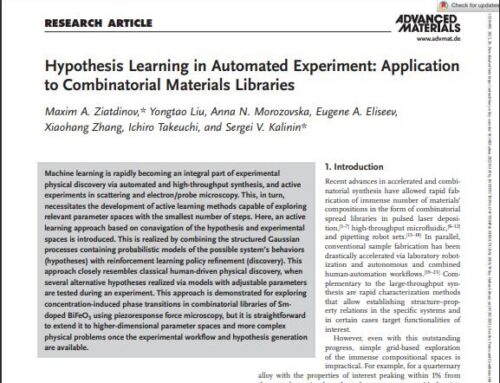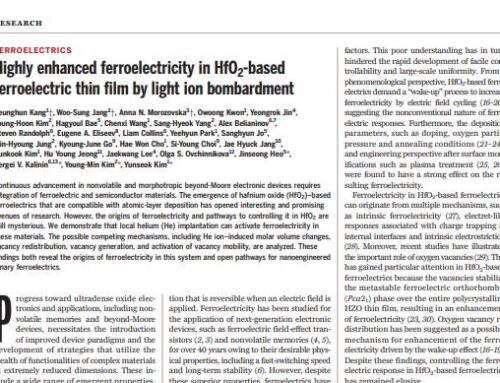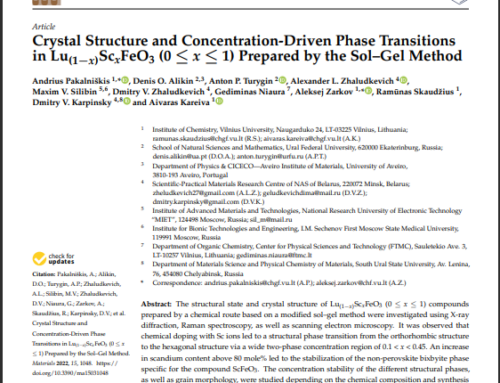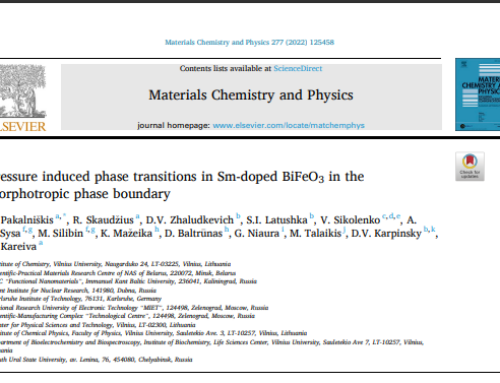Abstract: Single phase barium titanate–bismuth ferrite ((1-x)BaTiO3-(x)BiFeO3, BTO-BFO) solid solutions were prepared using citric acid and ethylene glycol assisted sol-gel synthesis method. Depending on the dopant content the samples are characterized by tetragonal, tetragonal-pseudocubic, pseudocubic and rhombohedral structure as confirmed by Raman spectroscopy and XRD measurements. An increase of the BFO content leads to a reduction in the cell parameters accompanied by a decrease in polar distortion of the unit cell wherein an average particle size increases from 60 up to 350 nm. Non zero piezoresponse was observed in the compounds with pseudocubic structure while no polar distortion was detected in their crystal structure using X-ray diffraction method. The origin of the observed non-negligible piezoresponse was discussed assuming a coexistence of nanoscale polar and non-polar phases attributed to the solid solutions with high BFO content. A coexistence of the nanoscale regions having polar and non-polar character is considered as a key factor to increase macroscopic piezoresponse in the related compounds due to increased mobility of the domain walls and phase boundaries.
Title: Nanoscale ferroelectricity in pseudo-cubic sol-gel derived barium titanate – bismuth ferrite (BaTiO3 – BiFeO3) solid solutions
Authors: A. Pakalniškis, A. Lukowiak, G. Niaura, P. Głuchowski, D. V. Karpinsky, D. O. Alikin, A. S. Abramov, A. Zhaludkevich, M. Silibin, A. L. Kholkin, R. Skaudžius, W. Strek, A. Kareiva
DOI: https://doi.org/10.1016/j.jallcom.2020.154632 Journal of Alloys and Compounds (2020) 830, 154632
Preprint: https://arxiv.org/abs/2011.12721

